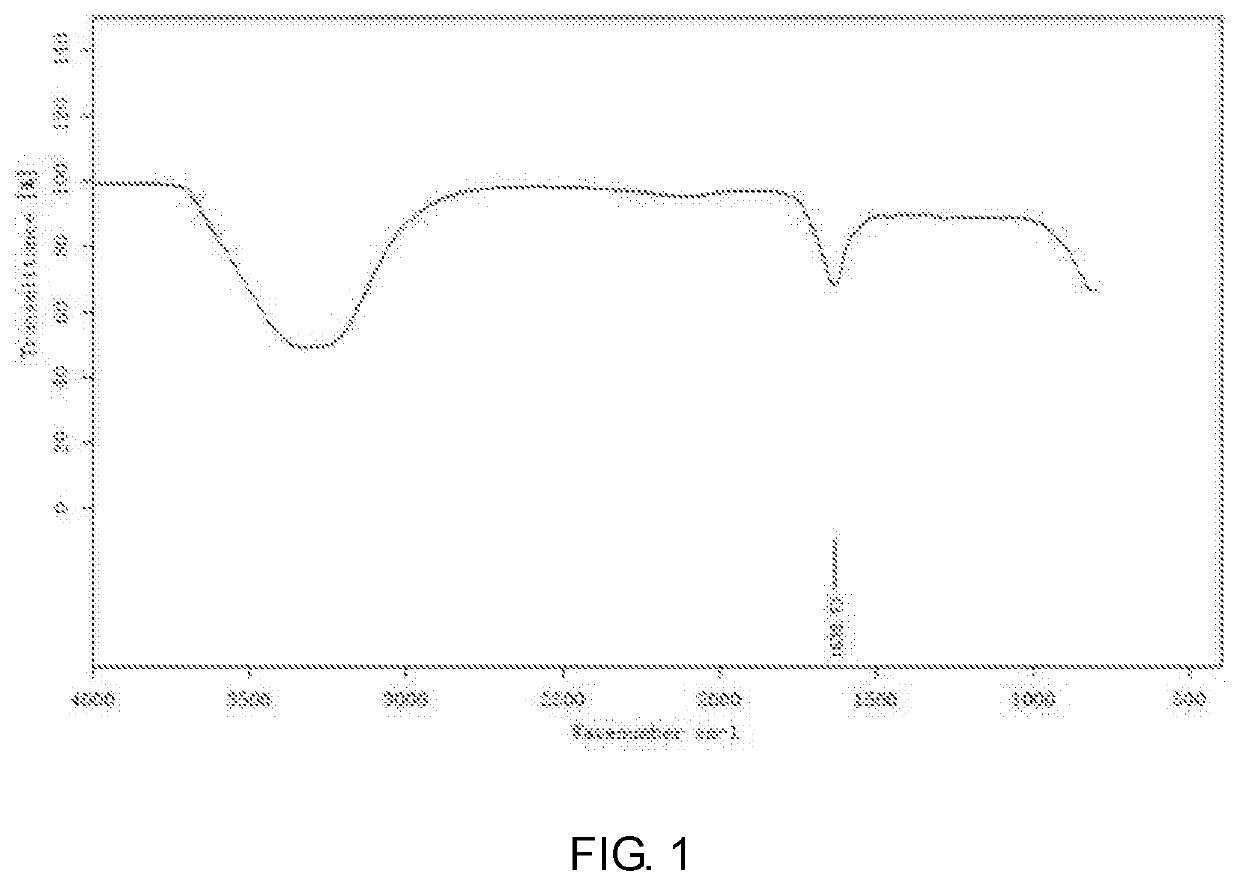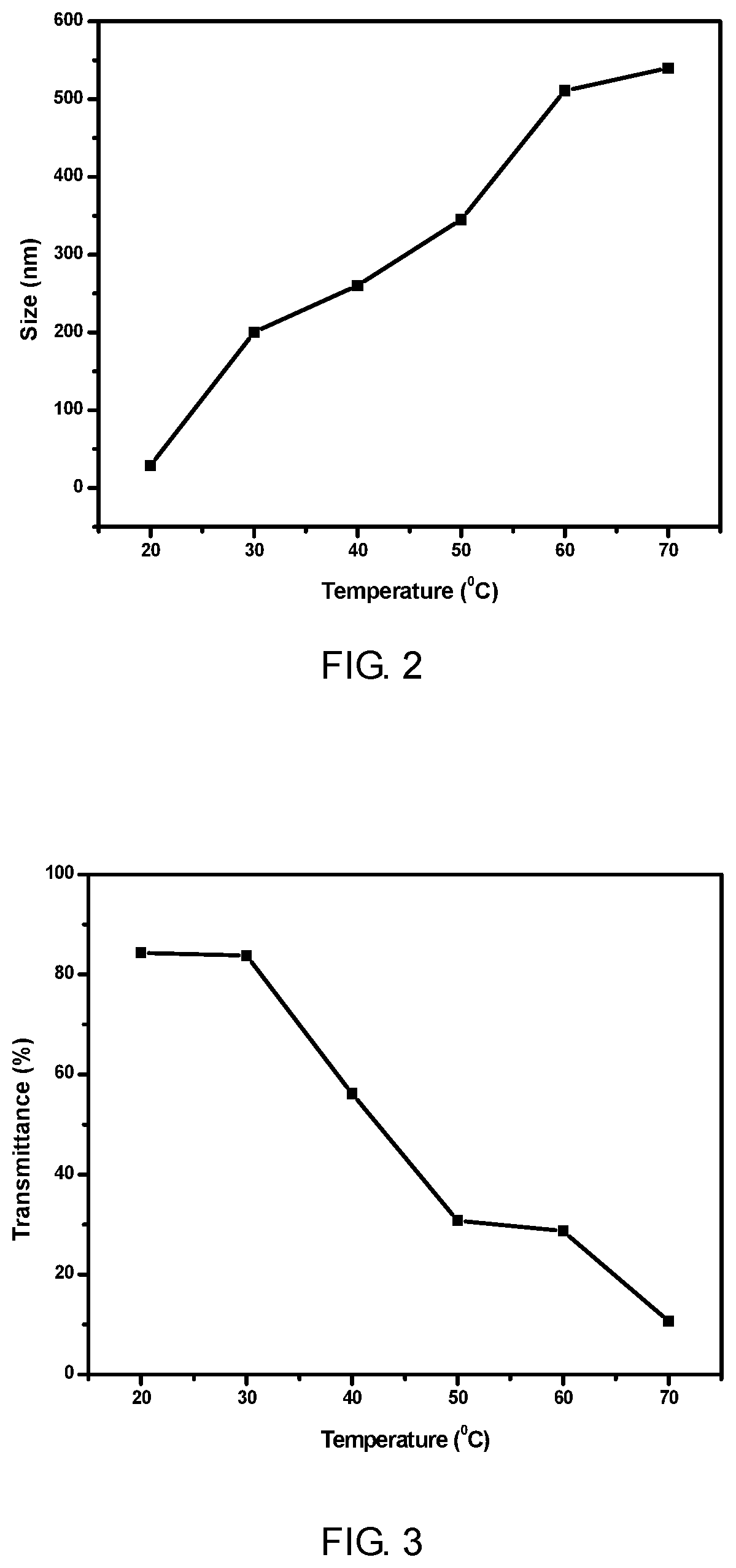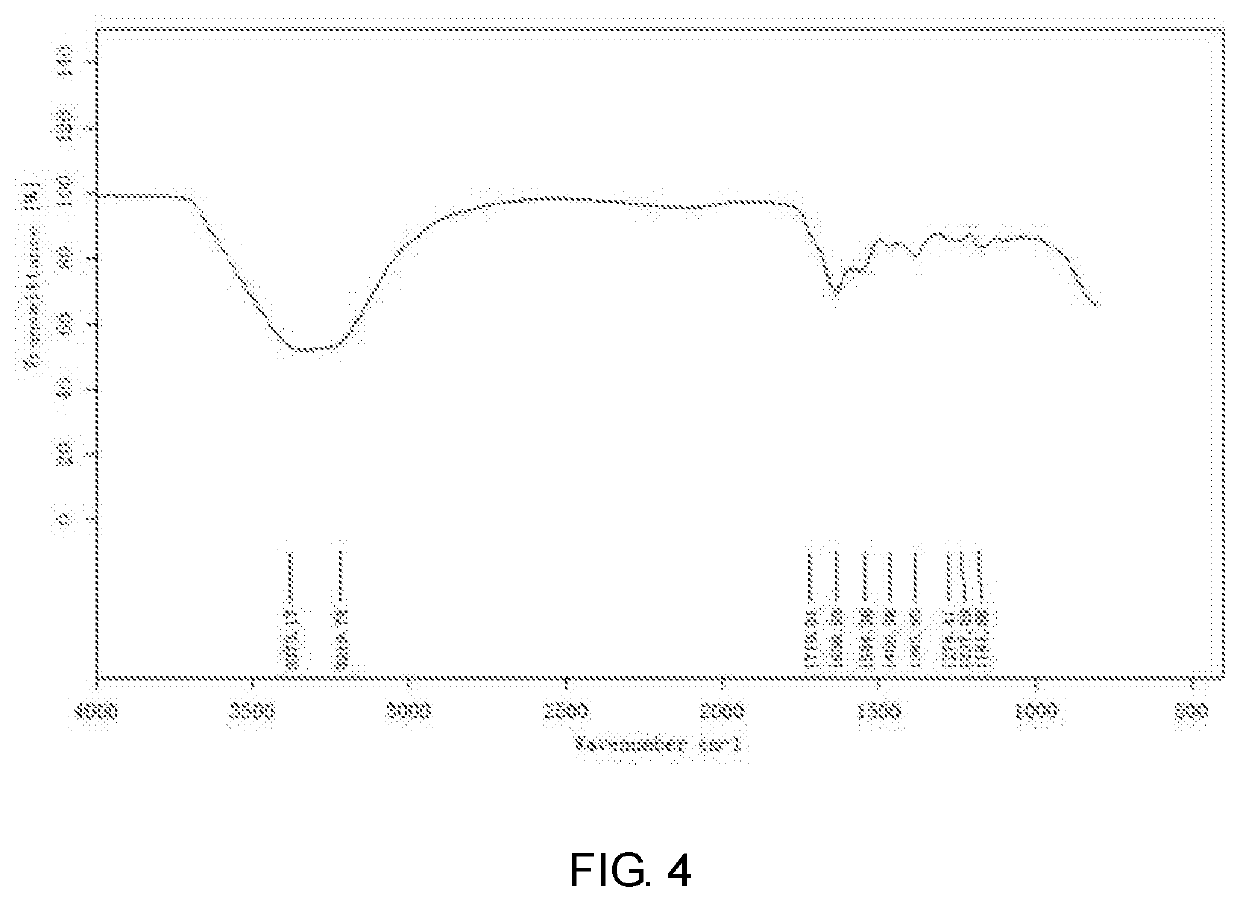End-group functionalized comb structure polycarboxylic acid and method for preparing the same
a comb structure and polycarboxylic acid technology, applied in the field of temperature/ph-responsive polycarboxylic acid materials, can solve the problems of reducing the ability of concrete, affecting the stability of concrete, so as to improve the stability and durability of concrete, improve the competitiveness and application prospect, and facilitate operation.
- Summary
- Abstract
- Description
- Claims
- Application Information
AI Technical Summary
Benefits of technology
Problems solved by technology
Method used
Image
Examples
embodiment 1
[0053]Firstly, 72.81 g N,N-dimethylformamide is added to the reactor and heat to 70° C., then 7.11 g azobisvaleronitrile is added with 25 minutes agitation until the mixture is evenly mixed; the mixture solution of 24.27 g N-Isopropylmethacrylamide and 1.49 g 2-mercaptoethanol is introduced for 10 hours, after dropping, the self-polymerization product polyN-isopropylmethacrylamide solution is obtained by reacting at a constant temperature of 700 for 5 hours; 9.68 g allyl bromide, 10.34 g N,N-diisopropyl ethylamine and 0.19 g benzyltrimethylammonium chloride are successively added into the self-polymerization product solution, adjust the temperature to 50° C. with agitation and keep the reaction at a constant temperature of 50° C. for 12 hours, remove N,N-dimethyl formamide and excess reagent to obtain unsaturated polyN-isopropylmethacrylamide macromonemer by means of decompressed distillation; 27.37 g unsaturated polyN-isopropylmethacrylamide macromonemer is dissolved in 16.42 g sol...
embodiment 2
[0054]Firstly, 91.60 g aniline is added to the reactor and heat to 90° C., then 5.10 g benzoyl peroxide is added with 20 minutes agitation until the mixture is evenly mixed; the mixture solution of 18.32 g N-n-propylacrylamide and 2.98 g 3-mercapto propanol is introduced for 8 hours, after dropping, the self-polymerization product PolyN-N-propyl acrylamide solution is obtained by reacting at a constant temperature of 90° C. for 4 hours; 8.15 g 3-chloro-2-methylpropene, 13.95 g tetramethylethylenediamine and 0.27 g benzyl triethyl ammonium chloride are successively added into the self-polymerization product solution, adjust the temperature to 700 with agitation and keep the reaction at a constant temperature of 70° C. for 9 hours, remove aniline and excess reagent to obtain unsaturated polyN-n-propyl acrylamide macromonemer by means of decompressed distillation; 23.05 g unsaturated polyN-n-propyl acrylamide macromonemer is dissolved in 18.44 g solvent water and heat to 70° C., agitat...
embodiment 3
[0055]Firstly, 280.56 g tetrahydrofuran is added to the reactor and heat to 120° C., then 1.72 g di-tert-butyl peroxide is added with 10 minutes agitation until the mixture is evenly mixed; the mixture solution of 23.38 g N,N-dimethylacrylamide and 11.06 g 2-mercaptoethanol is introduced for 1 hours, after dropping, the self-polymerization product polyN-N-dimethylacrylamide solution is obtained by reacting at a constant temperature of 120° C. for 1 hours; 10.71 g allyl chloride, 217.14 g N,N-diisopropyl ethylamine and 0.72 g tetraethyl ammonium iodide are successively added into the self-polymerization product solution, adjust the temperature to 120° C. with agitation and keep the reaction at a constant temperature of 120° C. for 2 hours, remove tetrahydrofuran and excess reagent to obtain unsaturated
[0056]polyN,N-dimethylacrylamide macromonemer by means of decompressed distillation; 29.05 g unsaturated polyN,N-dimethylacrylamide macromonemer is dissolved in 34.86 g solvent water an...
PUM
| Property | Measurement | Unit |
|---|---|---|
| constant temperature | aaaaa | aaaaa |
| temperature | aaaaa | aaaaa |
| temperature | aaaaa | aaaaa |
Abstract
Description
Claims
Application Information
 Login to View More
Login to View More - R&D
- Intellectual Property
- Life Sciences
- Materials
- Tech Scout
- Unparalleled Data Quality
- Higher Quality Content
- 60% Fewer Hallucinations
Browse by: Latest US Patents, China's latest patents, Technical Efficacy Thesaurus, Application Domain, Technology Topic, Popular Technical Reports.
© 2025 PatSnap. All rights reserved.Legal|Privacy policy|Modern Slavery Act Transparency Statement|Sitemap|About US| Contact US: help@patsnap.com



